Choosing the right dog crate for your medium-sized furry friend can feel like navigating a maze, with countless options vying for your attention. Whether you’re a seasoned dog owner or welcoming your first pup, finding a safe, comfortable, and durable crate is paramount. As a dedicated editor for “Dog Care Story” and a passionate advocate for canine well-being, I’ve extensively researched and tested various dog crates to help you make an informed decision. This guide focuses on the Best Dog Crates For Medium Dogs, offering insights based on real-world experience and rigorous evaluation.
My journey into the world of dog crates began with my own two anxious Alaskan Klee Kai, Copper and Skye. Their need for a secure haven led me to explore numerous brands and models over the past five years. This quest has allowed me to build a deep understanding of what makes a dog crate truly exceptional, and I’m excited to share my top recommendations with you.
Understanding Your Needs: Beyond Just a Crate
Before diving into specific product reviews, it’s crucial to consider what you need from a dog crate. Are you looking for a travel companion, a sanctuary for an anxious dog, or a durable option for outdoor adventures? The “best” crate is subjective and depends entirely on your dog’s temperament, your lifestyle, and your specific requirements. This article aims to demystify the selection process by categorizing crates based on common needs, ensuring you find the perfect fit for your medium-sized dog.
Best Dog Crates for Medium Dogs: Expert Picks
After years of hands-on testing and observation, here are my top recommendations for the best dog crates for medium dogs, catering to various scenarios and needs.
1. Best Dog Crate for Dogs with Separation Anxiety
For dogs that struggle with separation anxiety, a crate that provides a sense of security and mimics a den is essential. The Impact High Anxiety Dog Crate has been a game-changer for my own dogs, Copper and Skye. We’ve been using the 30″ size for three years, and it has significantly improved their comfort levels when left alone. Its robust construction and den-like feel offer a safe retreat, shielding them from external stressors like toddler interactions or visitor arrivals.
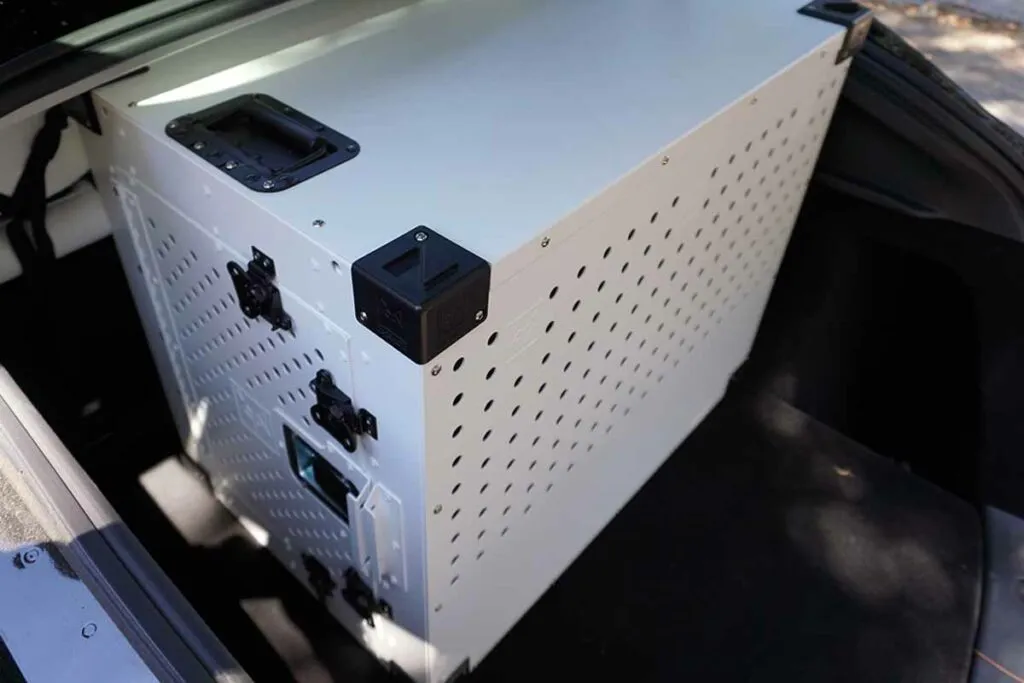 Impact High Anxiety Dog Crate in Tesla Model Y trunk
Impact High Anxiety Dog Crate in Tesla Model Y trunk
This crate’s design is specifically engineered to deter escape attempts and provide a calming environment for anxious pups. The peace of mind it offers is invaluable for any owner dealing with separation anxiety.
[CLICK HERE TO GET 15% OFF IMPACT CRATE with code “kleekai”]2. Best Dog Crate for Travel
When it comes to traveling with your canine companion, safety and security are paramount. While I’ve tested several options, including the High Anxiety, Enventur, and Gunner G1 Kennel, the Gunner G1 Kennel stands out as a top choice for travel. Its integrated tie-downs and securing pins make it incredibly easy to fasten securely in your vehicle’s trunk. Crucially, the G1 Kennel has undergone and passed rigorous crash safety testing, offering unparalleled peace of mind in the event of an accident. Many owners have shared incredible testimonials about how the G1 Kennel has protected their pets during unforeseen incidents.
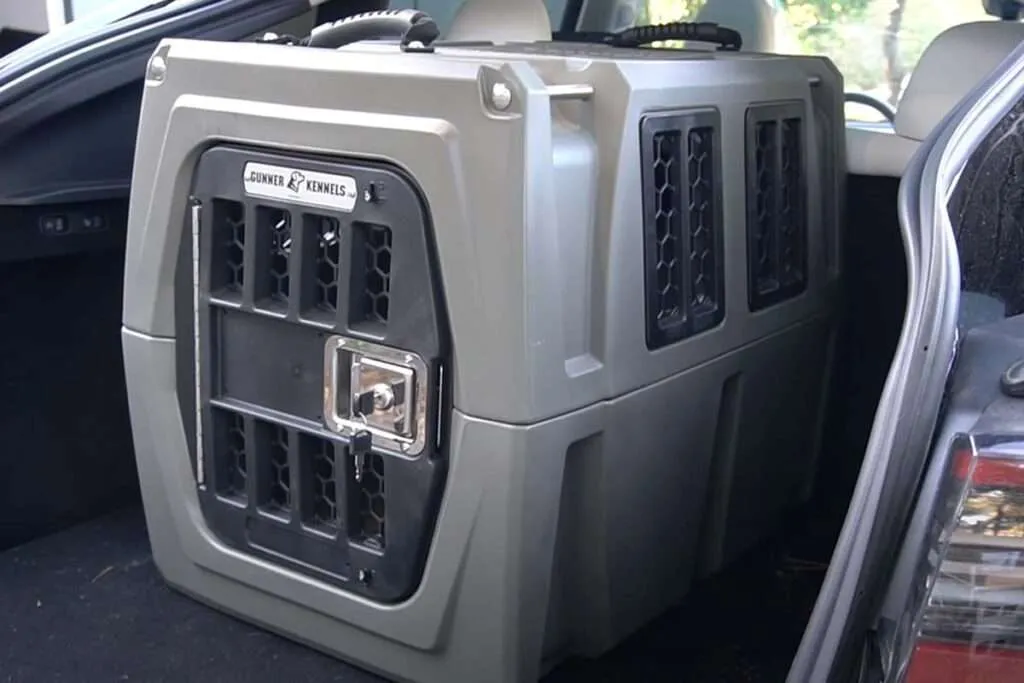 Gunner G1 Kennel in Tesla Model Y
Gunner G1 Kennel in Tesla Model Y
For owners who prioritize safety above all else during travel, the Gunner G1 Kennel is a superior investment.
[CLICK HERE to GET $50 off GUNNER KENNELS]3. Best Collapsible Dog Crate
Collapsible dog crates offer incredible versatility, making them ideal for owners who need a portable and easily storable solution. Among the top contenders, the Impact Collapsible Crate edges out its competitors, primarily due to my dogs’ preference for it. Its sturdy construction, effective ventilation, and user-friendly steel-latch paddle door make it a reliable choice. While other collapsible crates offer multiple entry points, the Impact Collapsible Crate provides a more reassuring and less intimidating design for dogs.
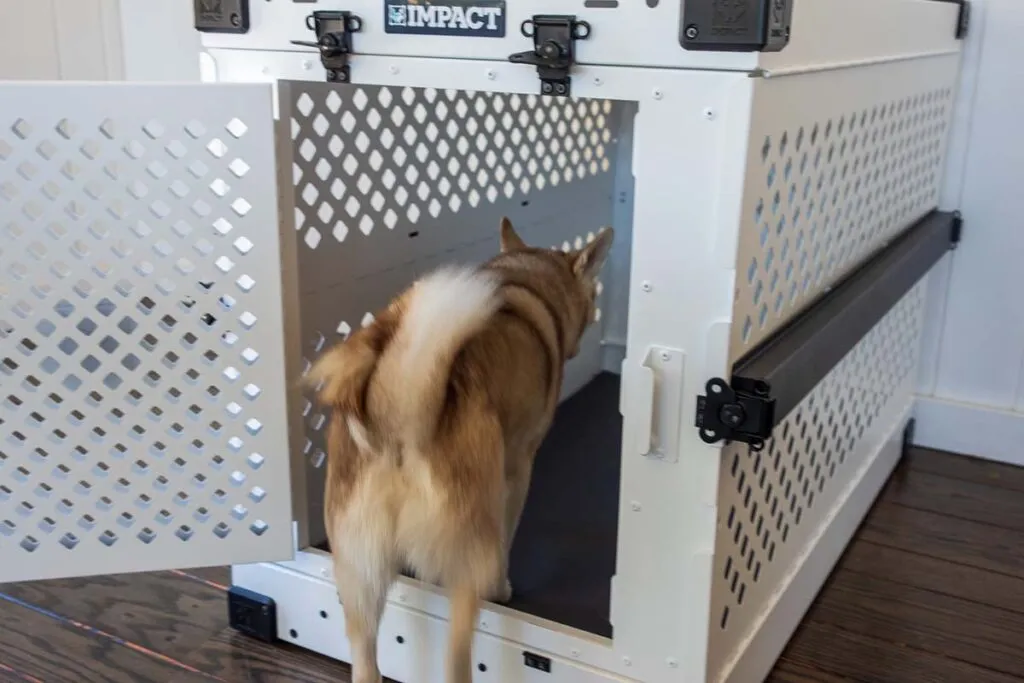 Copper enters his Impact Collapsible Dog Crate
Copper enters his Impact Collapsible Dog Crate
This crate is perfect for transitioning from home use to car travel or even to a temporary setup at a hotel or friend’s house.
[CLICK HERE TO GET 15% OFF IMPACT CRATE with code “kleekai”]4. Best Inflatable Dog Crate
For a lightweight and adaptable option, inflatable dog crates have gained popularity. The Enventur Travel Kennel has proven to be the leading performer in this category. Its ease of inflation and deflation, combined with the comfort it provides for dogs, makes it a highly practical choice. This crate is remarkably versatile, serving well in various environments – from the car to the garage, and even for outdoor activities like fire pit gatherings. Its ability to fold away compactly for storage further enhances its appeal.
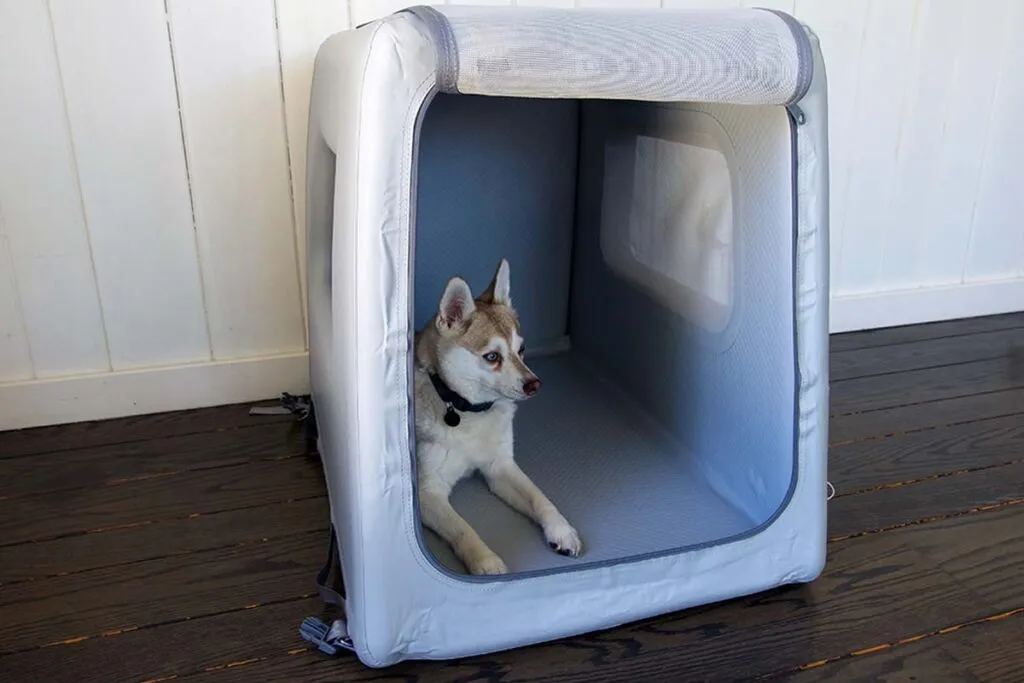 Copper in his Enventur Travel Kennel
Copper in his Enventur Travel Kennel
The Enventur is an excellent option for owners seeking a lightweight yet durable crate that can adapt to different situations.
[click here to order your diggs crate]5. Best Dog Crate for Puppies
Introducing a puppy to a crate is a significant step in their training and development. The Diggs Evolv Dog Crate is the crate I wish I had when my pups were younger. It offers an exceptional entry point into the world of dog crates, featuring a modular design that can be configured with or without a roof, and even transformed into a playpen. The inclusion of a puppy divider and a removable tray makes it incredibly practical for managing young dogs. Furthermore, it stands out as one of the most affordable options available without compromising on quality or functionality.
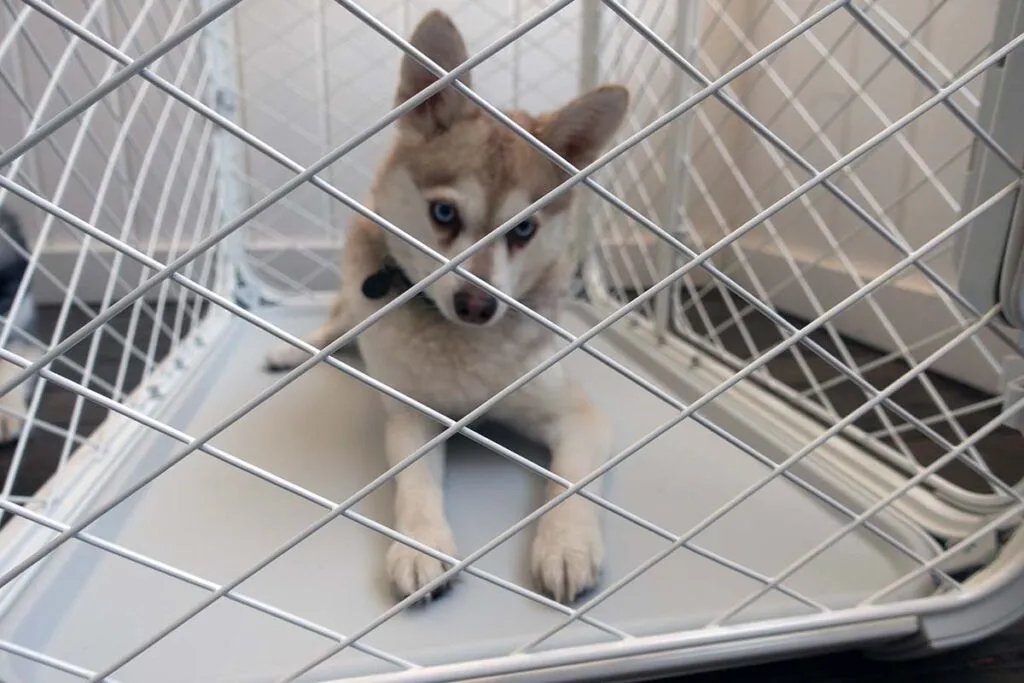 Copper in the Diggs Evolv Dog Crate
Copper in the Diggs Evolv Dog Crate
The Diggs Evolv is a fantastic investment for puppy owners, offering adaptability and excellent value.
[click here to order your diggs crate]6. Best Dog Crate for Air Travel
When it comes to air travel, specific airline regulations must be met. The Impact Collapsible Dog Crate is the only crate on this list that is approved for air travel, provided you use the necessary rails to meet airline standards. It is highly recommended to contact Impact and your chosen airline in advance to confirm size requirements and ensure compliance for a comfortable journey for your pet.
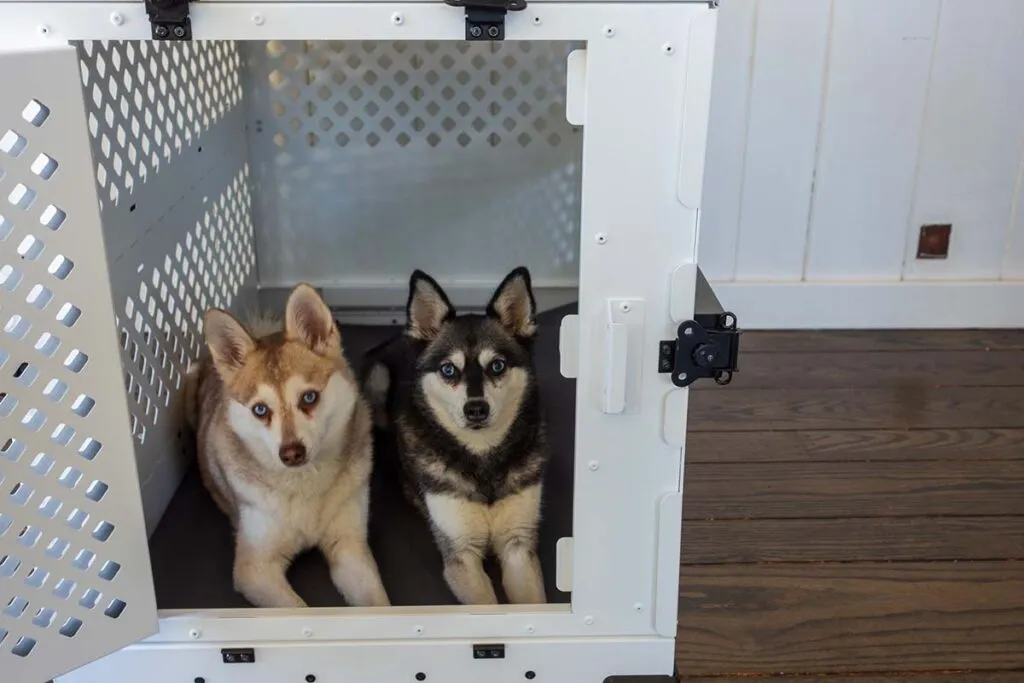 Copper and Skye in their Impact Collapsible Dog Crate
Copper and Skye in their Impact Collapsible Dog Crate
This crate offers a secure and compliant solution for pet owners planning to fly with their dogs.
[CLICK HERE TO GET 15% OFF IMPACT CRATE with code “kleekai”]7. Best Dog Crate for Truck Beds
For owners who frequently transport their dogs in truck beds, durability and security are paramount. While I don’t personally own a truck, my research indicates that the Gunner G1 Kennel is the market leader for this specific need. Its robust construction is designed to withstand the rigors of truck bed transport, ensuring your medium-sized dog remains safe and secure during transit.
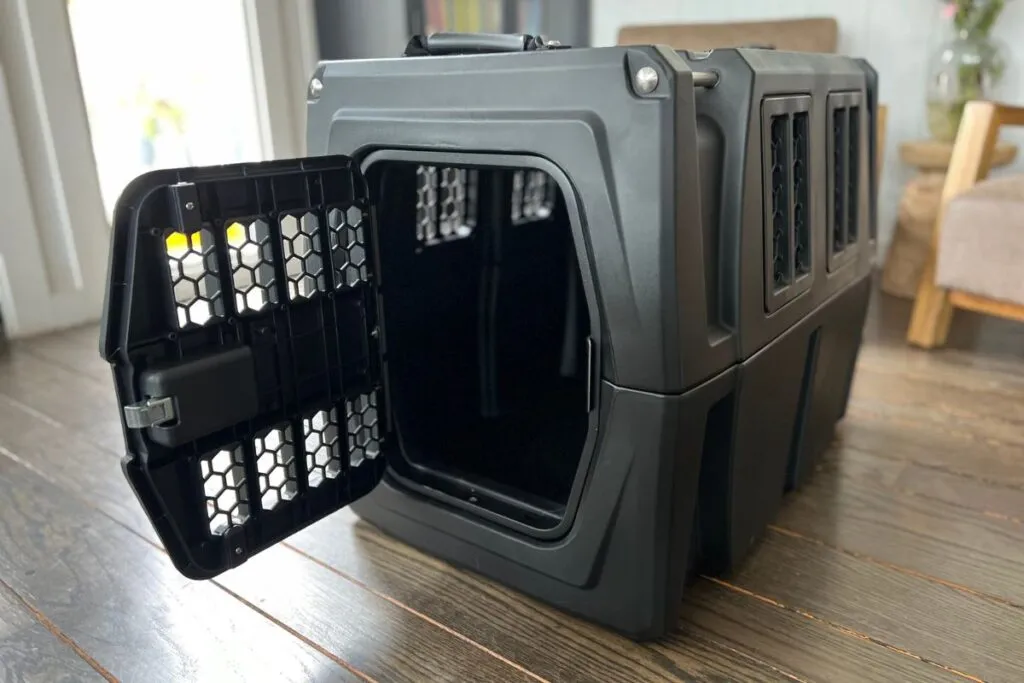 Gunner G1 Kennel (Medium)
Gunner G1 Kennel (Medium)
The Gunner G1 Kennel provides the ruggedness and stability required for transporting dogs in truck beds.
[CLICK HERE to GET $50 off GUNNER KENNELS]8. Best Dog Crate for Tesla Model Y
As a Tesla Model Y owner, I can attest to the challenges and triumphs of fitting dog crates into this popular vehicle. While the High Anxiety crate was a snug fit, both the Enventur and the G1 Kennel fit comfortably. I personally lean towards the Enventur due to its lighter weight, making it more maneuverable, especially when my wife is handling it. Although the G1 Kennel is exceptionally sturdy, its considerable weight can make it cumbersome to move, despite its kayak-style handles. For ease of handling and ample space within a Tesla Model Y, the Enventur is my top recommendation.
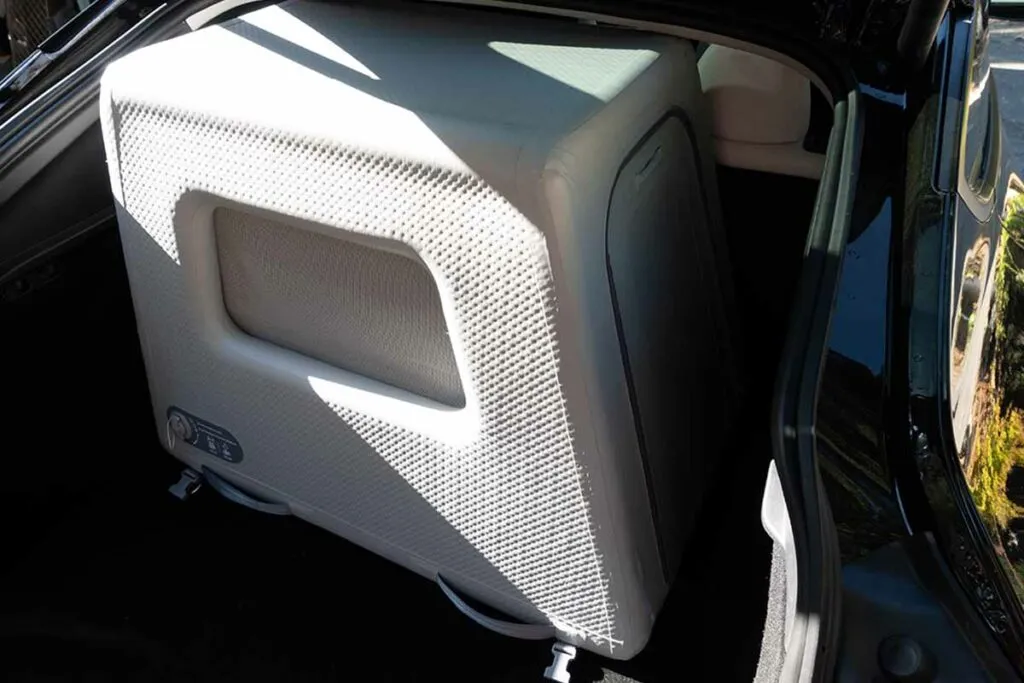 Enventur (34" size) in Tesla Model Y
Enventur (34" size) in Tesla Model Y
The Enventur offers a great balance of fit, weight, and comfort for medium dogs in a Tesla Model Y.
9. Best Dog Crate for Escape Artists
Owners of dogs who are notorious escape artists require a crate that offers ultimate security. The Impact High Anxiety Dog Crate is explicitly designed to be escape-proof, a claim backed by their dog damage guarantee. This level of confidence from the manufacturer speaks volumes about its ability to contain even the most determined escape artists. My own dog, Copper, finds his High Anxiety Crate to be a secure and comfortable space where he often relaxes during the day.
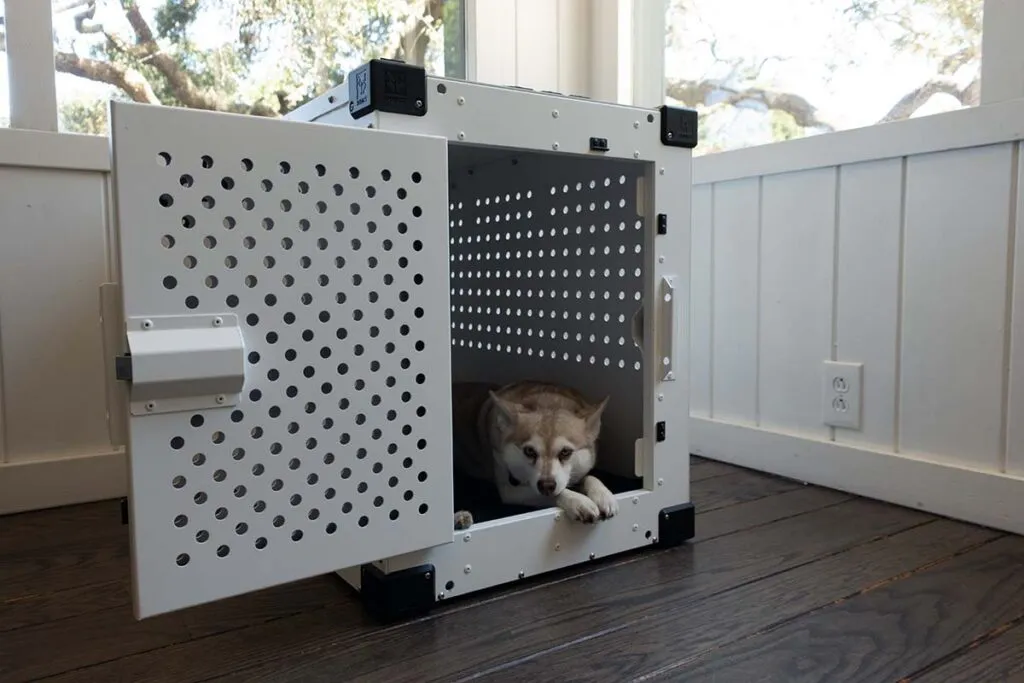 Copper in his Impact High Anxiety dog crate
Copper in his Impact High Anxiety dog crate
For an escape-proof solution that prioritizes your dog’s safety, the Impact High Anxiety Crate is an exceptional choice.
[CLICK HERE TO GET 15% OFF IMPACT CRATE with code “kleekai”]10. Most Versatile Dog Crate
Determining the “most versatile” dog crate is a challenge, as several options on this list offer a wide range of uses. However, considering its adaptability for home, car, air travel (with modifications), and general portability, Impact’s Collapsible Dog Crate earns the crown for versatility. While the Enventur and Revol are also highly versatile, the Impact Collapsible Crate’s all-around usability makes it a standout choice for a variety of owner needs.
 Copper and Skye in their Impact Collapsible Dog Crate
Copper and Skye in their Impact Collapsible Dog Crate
This crate is a strong contender for owners who need a single solution that can adapt to many different situations.
[CLICK HERE TO GET 15% OFF IMPACT CRATE with code “kleekai”]Conclusion
Navigating the world of dog crates can be overwhelming, but by understanding your specific needs and considering the features that matter most to you and your medium-sized dog, the selection process becomes much clearer. The Impact High Anxiety Dog Crate and the Enventur by Diggs are the two crates that I personally rely on most frequently. The High Anxiety Crate remains a constant fixture in my living room, providing a sanctuary for my dogs, while the Enventur is my go-to for travel, car trips, and even office use.
Hopefully, this comprehensive guide has provided valuable insights and concrete recommendations to help you find the perfect crate for your canine companion. Investing in a quality dog crate is investing in your dog’s safety, comfort, and overall well-being.
Kieran Beckles
